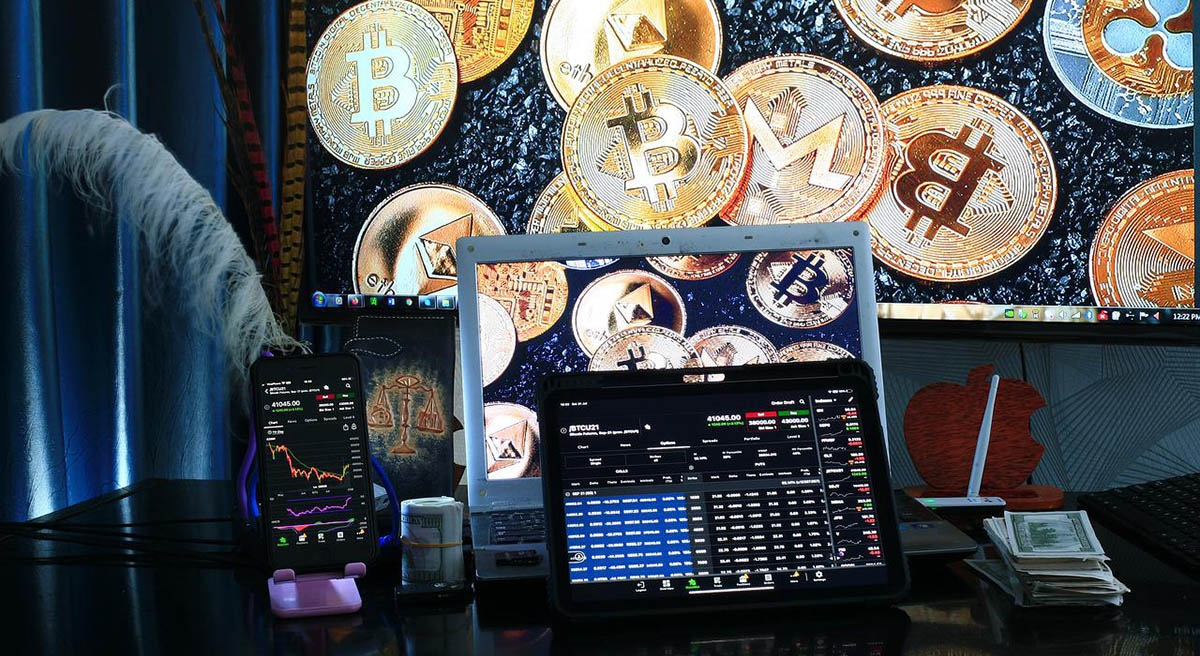
10 Important Cryptocurrencies Other Than Bitcoin
With the rise of cryptocurrencies like Bitcoin, there are now hundreds of digital currencies available for use. While Bitcoin is often considered the first and most important cryptocurrency, there are many others that have gained traction among investors and users.
In this guide, we'll look at ten of the biggest cryptocurrencies other than Bitcoin. These are some of the most popular altcoins on the market today. They're all worth looking into if you're interested in investing in cryptocurrency or just want to get involved with a new form of payment.
Let's dive right in!
Polkadot
So, what is Polkadot? Polkadot is a cryptocurrency built on Ethereum. It's a decentralized platform that allows users to build and deploy their own blockchain networks, connecting to the Polkadot network. In other words, it's like a shared hosting service for blockchains—you can deploy your blockchain on Polkadot instead of hosting it yourself.
This means that you don't need to worry about maintaining servers or completing updates on your end; instead, you can connect your smart contracts to the Polkadot network and let the operator handle everything else.
You can use it to run games—think Pokemon Go-like augmented reality games and potentially even VR—because each user will have their own nodes running locally, so they can enter an “alternate reality” using just their phones. This will allow users to interact in real-time with objects in the game through blockchain technology without having to rely on expensive hardware (like AR headsets) or wait for centralized servers (which are often slow).
There are plans for interoperability with existing blockchains—this means that if you're already running your decentralized app on another chain such as Ethereum or EOSIO (Ethereum's newer rival), then you'll be able to integrate it seamlessly into Polkadot! That's pretty cool because not only does this mean more freedom for developers when building dApps; but now there's an incentive from outside sources too: imagine how much easier it would be if all your favorite apps were available together under one roof at no additional cost!
Ethereum Classic
Ethereum Classic (ETC) is a blockchain-based, decentralized platform that runs smart contracts and allows you to perform transactions related to other cryptocurrencies.
The platform enables Decentralized Autonomous Organizations (DAOs), which are essentially organizations that run on smart contracts and computer programs. These DAOs execute transactions automatically after members vote for them.
Ethereum Classic focuses on immutability, resistance to external meddling, and censorship resistance.
The currency was created by a hard fork of the original cryptocurrency Ethereum in 2016 following the infamous DAO hack. A hard fork is a split in the original blockchain-based cryptocurrency leading to two separate versions of the same coin with different rules.
This split occurred because the two sides disagreed about how best to proceed following the hack — one side wanted to reverse the transaction, while others did not want to interfere with what had happened on the blockchain. Eventually, this led to a permanent split resulting in Ethereum Classic going its own way as an independent project from Ethereum.
Cardano
Cardano is a decentralized blockchain technology that uses ADA as its cryptocurrency. Similar to Bitcoin, Cardano’s platform has a limit of 45 billion ADA coins, but the supply is currently at 31 billion and growing at a rate of 5% per year. Unlike Bitcoin, where all transactions occur on one blockchain ledger and are available to anyone who wants to view them, Cardano splits its ledger in two: the first one keeps track of balances while the second one stores transaction histories.
The purpose behind this separation is to make it easier for users to move their money anonymously within the system. To do this, users are given pseudonymous identities (like having a user ID) so they can send funds without giving away their real names or other personal information. To add another layer of security, transactions must also be verified by multiple parties before they're added into either ledger—this way no single person can change records without everyone knowing about it.
Verge
It's the year 2017 and you have your own cryptocurrency, but you're not sure what to do with it. You've already bought a pizza with Bitcoin, so that option is out. What else can be done?
You could try Verge (XVG), which bills itself as a privacy-focused cryptocurrency for everyday consumer use. It was created initially in 2014 as DogeCoinDark, then later rebranded to Verge Currency in 2016.
Unlike other privacy coins such as Zcash or Monero, Verge uses several anonymity-centric networks such as Tor and I2P that obscure the IP addresses and locations of its users so that they are untraceable. The problem with other privacy coins is that the sender's address remains private, but the recipient's address is still visible on the blockchain. With Verge, both addresses are invisible and transactions are totally untraceable without compromising transaction speeds required for everyday use by regular consumers.
Litecoin
Litecoin (LTC) was launched in 2011 as the first altcoin and is still around today. It's one of the more popular cryptocurrencies, ranking fourth by market capitalization on CoinMarketCap at the time of writing.
It was designed to be a faster and lighter version of Bitcoin—and to avoid some of the problems with Bitcoin (such as high transaction fees). Litecoin has been used in many cases as an intermediary currency for exchanging other cryptocurrencies. Like Bitcoin, Litecoin uses proof-of-work to mine new coins—except it uses Scrypt instead of SHA-256 hashing as its proof-of-work algorithm. As a result, Litecoin mining requires less energy than Bitcoin mining.
Tether
Tether (USDT) is a stable coin that is pegged to the US dollar, the euro, or the Japanese yen (whichever you choose). A stable coin doesn’t trade like a typical cryptocurrency. It simply holds an amount of fiat currency as collateral and issues tokens that can be redeemed for cash on demand.
The amount of USDT in circulation is always equal to the US dollars held in bank accounts. The same goes for EURT and JPYT: Tether automatically converts these tokens into whatever fiat currency they are pegged to at any given time.
Lumens (XLM)
Lumens, also known as Stellar, is an open-source protocol that allows you to send money across borders quickly and with low fees. It's meant to be used as a means of transferring money between different fiat currencies—for example, USD to EUR. The idea is that Lumens will function as a bridge currency, facilitating the exchange from one currency to another at the current exchange rate.
The Lumen cryptocurrency aims to connect people to low-cost financial services to fight poverty and increase individual opportunity. Its main focus is on developing countries but its goal is universal access and education of financial services for all individuals regardless of where they live.
You may have heard of Bitcoin before. It's the first cryptocurrency that was created and is used all over the world as a digital currency. You can purchase anything from clothes to cars to houses with it. But what are cryptocurrencies?
Cryptocurrencies are a form of digital asset that uses cryptography as a security measure, as well as to regulate the generation of additional units and verify transactions on the blockchain. Cryptocurrency networks are decentralized and not managed by any central authority like governments or financial institutions, which means they are not held in banks or by any other regulatory body. As such, they can be used globally without restriction.
Photo: Sergei Tokmakov Terms.Law, Pixabay









